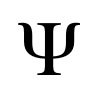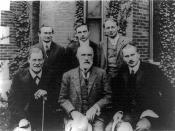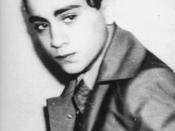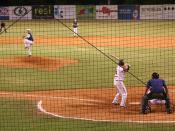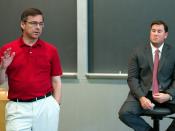Summarize relevant aspects of Jungian psychology and demonstrate their influence on either A Child of Our Time or A Midsummer Marriage.
The relevance of Jungian Psychology, when studying Tippet, is unquestionable, almost perfunctory. The psychological theories of Jung were greatly admired by Tippet who was undoubtedly influenced a great deal by JungÃÂs observations of the psyche. Tippett not only clearly understood and supported the validity of JungÃÂs theories, but also fully incorporated them into his life; using the theories as an almost spiritual base from which he could ascertain a clear understanding of his ÃÂselfÃÂ (i.e. analysing his own dreams in a Jungian fashion). This is evident in TippettÃÂs own writings. Throughout his book, Tippett on Music, Tippet makes several references to Jung, whether discussing the psyche of others, or indeed writing about ÃÂaspects on beliefÃÂ; the consequences of JungÃÂs psychological theories on Tippett are evident.
Tippett found that Jungian psychology explored the psyche in more depth than FreudÃÂs.
The contemporary mind: intellectual, advanced, modern, and rational is able to be understood better by adopting JungÃÂs therapeutic approach; an approach keen to accept the unconscious as an aspect of the psyche which may harbour more than just repressed memories. Tippett appreciated the opportunity in which to understand his highly active and contemporary mind, fostering a ÃÂneed to balance such a terrifying therapy with an equal examination of the collective non-primitiveÃÂ . In wanting to know himself truly by acknowledging his unconscious, Tippett integrated JungÃÂs psychologies into his life. Tippet believed that ÃÂJung has found a way to bring this collective non-primitive into relation with our excessively rationalistic, empirical modern mindsÃÂ . It seems that Tippett, who was searching for answers to many ontological questions ÃÂ perhaps most prevalent that being the rationalization of his homosexuality ÃÂ was able to find a means in which to find answers by following JungÃÂs theories.
Tippett was also able to further his understanding of the human race by acknowledging the connecting aspect of each individualsÃÂ psyche; the ÃÂcollective-unconsciousÃÂ. To Tippett, JungÃÂs theories were so convincing that he not only used them to rationalize his own psyche, but also realised the empathetic bond between humans, seeking not only epistemological answers, but an answer to the connections that exist between them. ÃÂSome of us are driven by other agonies to a deeper analysis, until we meet on the labyrinthine paths of the collective unconscious those events, age-old predilections of the mind, which Jung calls the ArchetypesÃÂ . It is perhaps through JungÃÂs idea of archetypal knowledge that Tippett connects most to JungÃÂs psychology; seeing the potential of an innate knowledge of things ÃÂ which somewhat resonates with the ideology of Platonic philosophy ÃÂ to act as a means through which he could communicate in his music.
A Child of Our Time was TippettÃÂs attempt at communicating to a large audience ÃÂa complex of ill-defined but essentially compassionate emotions deriving from his reactions to the 1914-1918 war [First World War]ÃÂ . More specifically, Tippett felt that he needed to address injustice, ÃÂhis feelings towards the socially deprived or exploitedÃÂ . Tippett indubitably found latent in his feelings for the exploited, JungÃÂs ideology of projection and its pertinence to ÃÂthe figure of the outcast or scapegoat upon whom such rejection is projected and through whom it ostensibly is justifiedÃÂ . In composing A Child of Our Time, Tippett was not only to ask why such rejection is projected, but also, uncover the ostensible justifications for such behaviour by examining and eliciting concepts of Jungian psychology.
It is the intention of this essay to examine those aspects of A Child of Our Time which are inextricable, or can be perceived to be linked to Jungian psychology. Not only will the event upon which the work was based be considered, but also the actual libretto and TippettÃÂs choice of language. TippettÃÂs intentions for and interactions between characters in the oratorio will also be discussed, as will the presence of Jung in the actual diegesis of the work. It is, however, important that relevant aspects of Jungian psychology are summarized in order to understand the ways in which the materials of TippettÃÂs work behave.
To understand the Jungian influence on TippettÃÂs choice of title and concept for the work, we must first understand JungÃÂs concept of archetypes. In breaking down the psyche into three parts: the conscious mind, the personal unconscious and the collective unconscious, Jung was further able to rationalize that:ÃÂfrom the unconscious there emanate determining influences which, independently of tradition, guarantee in every single individual a similarity and even a sameness of experience, and also of the way it is represented imaginatively. One of the main proofs of this is the almost universal parallelism between mythological motifs, which, on account of their quality as primordial images, I have called ArchetypesÃÂ .
TippettÃÂs choice of title is owed to a parallel he drew between ÃÂdon von HorvathÃÂs novel Ein Kind unserer Zeit, and the historical event of Kristallnacht, of which Herschel Grynspan became the model for TippettÃÂs scapegoat. ÃÂHorvathÃÂs story confirmed that TippettÃÂs central concept of the scapegoat was part of an age-old recurring pattern in human existenceÃÂ and Tippett therefore saw the opportunity for his oratorio to have ÃÂmore than documentary relevanceÃÂ . By basing his oratorio on the archetypal image of the scapegoat, TippettÃÂs intention was beyond merely commenting on the relevance of the situation at that time, but to also achieve a work which communicates with all humanity an ageless ÃÂsameness of experienceÃÂ; a work which addresses a concept familiar to us all. A Child of Our Time is, therefore, able to ask questions which ÃÂstretch well beyond historical limitsÃÂ , but is only permitted to do so depending upon the validity of JungÃÂs concept of archetypal images. The concept of A Child of Our Time relied heavily on TippettÃÂs faith in Jung and TippettÃÂs will power to confront head-on the question: ÃÂwhy men should mete out such inhumanity to one anotherÃÂ .
Other elements of Jungian psychology exist in the actual event upon which the oratorio is based. A Child of Our Time is based on the events which took place and led to what is known as Kristallnacht. The event involving Herschel Grynspan, a seventeen year-old Jewish boy, exemplifies many of JungÃÂs ideas. Jung not only characterized archetypes as belonging to the collective unconscious, but also ÃÂinstinctsÃÂ. Instincts are ÃÂthe innate biological drives that determine our behaviour. Examples are the sex drive, hunger and aggressionÃÂ . Jung also went further to say that these instincts were all powered by generic psyche energy, the ÃÂlibidoÃÂ. It can be seen that the actions of Grynspan were powered by his instinctual libido in a bid of revenge. The reaction of the Nazi Germans is also expressible in Jungian terms. Jung often makes references to ÃÂthe shadowÃÂ and ÃÂprojectionÃÂ. The shadow is a symbolic image of an ÃÂunconscious part of the personality that contains weaknesses and other aspects of personality that a person cannot admit to havingÃÂ . Projection, however, is ÃÂwhere an unconscious characteristic, a fault, or even a talent of oneÃÂs own is seen as belonging to another person or objectÃÂ , that is to say, a part an individuals psyche is projected on another person. Jung pointed out that projection wasnÃÂt limited to an individual alone and it is easily conceivable that a collective shadow could form a ÃÂspirit of the age, or ZeitgeistÃÂ ; a collective projection. This is most aptly demonstrated by the NaziÃÂs, whose collective shadow resulted in the Holocaust and also the reaction to GrynspanÃÂs shooting of the German official, Ernst vom Rath.
Tippett, therefore, had a lot of material latent with Jungian ideas with which to compose his oratorio. Naturally, the diegesis of the oratorio would contain those Jungian aspects demonstrated by the actual historical event. Tippett, however, furthers the audiencesÃÂ experience of Jung in the fictional world of his oratorio by personifying some of JungÃÂs concepts as characters in the story. We are talking here about what Jung referred to as the anima. Jung ÃÂbelieved that everyone has an inner personality and attitude, which is turned towards the world of the unconsciousÃÂ . It is with the idea of an inner personality that Tippett personifies, in the second scena of the second part of his oratorio, the anima of ÃÂthe boyÃÂ in the alto part. As the narrator gradually depicts the story, the alto observes the changes in the unconsciousness of ÃÂthe boyÃÂ, descriptions which grow dynamically as the story unfolds. The anima is also personified in the music itself. The scena which begins 9 bars before figure 83, uses the woodwind timbre, first exposed in the clarinet 5 bars before figure 83, as an obligatto timbre with which to complement or represent the alto voiceÃÂs personification of ÃÂthe boysÃÂ anima. ÃÂHis other self rises in himÃÂ is represented not by an ascending vocal setting, but rather the ascending motifs seen in the woodwinds (5 bars before figure 84: oboe and clarinet). Tippett even goes as far to attempt elicitation of a musical representation of ÃÂthe boysÃÂ behaviours which result from the energy of his ÃÂlibidoÃÂ. We can see that 2 bars before figure 84, Tippett juxtaposes the text and melodic line of the narrator (bass solo) with that of the anima (alto solo), demonstrating the overwhelming power of the libido to facilitate irrational behaviours; the sudden presence of two vocal lines incurs a momentary lapse of concentration in the audience.
The image of the anima is also explored later in the oratorio in Part III, the first alto solo. ÃÂThe soul of man is impassioned like a womanÃÂ ÃÂ Tippett directly refers to the anima, which Jung used ÃÂto describe the personification of the unconscious feminine aspect of a manÃÂs personalityÃÂ . Tippet is using here, however, the actual text of the libretto as a mode in which to communicate directly, information, as opposed to the more abstract personification of the anima, which requires more thought to perceive correctly. Tippett goes further with the text to define the very nature of the anima: ÃÂShe is old as the earth, beyond good and evil, the sensual garmentsÃÂ; Tippett acknowledges the intrinsic archetypal properties of the anima.
Tippet expresses a lot through his text and it is worth examining each part, highlighting the relevant parts which have manifested from Jungian psychology. The opening statement of the chorus: ÃÂThe world turns on its dark sideÃÂ, relies on a heavily symbolic language with which to communicate its Jungian inheritance. Tippett conjures the image of a zeitgeist through implying that all humanity, ÃÂthe worldÃÂ, has turned on its dark side; the word ÃÂdarkÃÂ being indicative of the shadow: a ÃÂcollective shadowÃÂ. The Alto Solo which follows is another example of the personification of the Anima, which in this case is observing the ÃÂliving godÃÂ ÃÂ The archetypes ÃÂ which ÃÂconsumes within and turns the flesh to cancer. Tippett suggests the irrational behaviour and lack of explanation for it is a result of manÃÂs ignorance of the unconscious in favour of developing empirical science. The unconscious will reassert itself in a way which man is not able to cope with or indeed, comprehend.
It is JungÃÂs idea of the shadow which is most prevalent in A Child of Our Time. There are, however, attempts by Tippett to suggest ways in which we can begin to fully understand ourselves through our understanding of our own shadow. Jung called this process ÃÂindividuationÃÂ and Tippett is undoubtedly an advocate of such a therapeutic ideology. Tippett questions whether our shadow, which is an integral aspect of the individuation process, is then good? Are JungÃÂs theories rational? The chorus, mankind in general ask, ÃÂis reason untrue?ÃÂ Tippett sets up in ÃÂThe ArgumentÃÂ the main propositions of his oratorio: a Jungian answer to the problem of a collective shadow in humanity.
After the dialogue between the chorus and alto solo, the narrator, bass solo, sings about a division in the commonwealth. This division, however, is representative of the splitting of the psyche into its several parts. The narrator in A Child of Our Time is to be perceived in a similar way to the personified anima in the alto part later on. It was TippettÃÂs intention to represent the ÃÂFather-God imageÃÂ or ÃÂImago-DeiÃÂ through the narrator, another personification of a Jungian archetype. TippettÃÂs decision to personify the ÃÂFather-God imageÃÂ is apt as the omniscience nature of the narrator resonates well with the archetypal image of God.
In the Tenor solo which follows the ÃÂChorus of the OppressedÃÂ, Tippet explores another area of Jungian Psychology. Here, JungÃÂs idea of the ego is explored through the image of ÃÂthe common manÃÂ . The ego is the part of the psyche which ÃÂgives us our sense of identityÃÂ , furthermore helps ÃÂus to function effectively in societyÃÂ . The words Tippett uses: ÃÂI am caught between my desires and their frustrations as between the hammer and the anvilÃÂ, create a metaphor for the interaction between the ego and the shadow of the common man. Tippet, in this tenor solo, portrays the concept of the self ÃÂwhich is the whole personality and includes both conscious and unconscious aspects of the psycheÃÂ .
The soprano solo which follows the tenor solo is quite similar in function. It portrays the ÃÂcommon womanÃÂ . Here, the absence of acknowledging any selfish desire makes the text more pertinent to an expression of the ego alone. The ego can be seen to be acclimatizing to the current situation of the world by expressing its immediate concerns: ÃÂHow shall I feed my children on so small a wage?ÃÂ Tippett acknowledges that the anima in men is more prevalent and as such is responsible for heightened elicitations of the shadow in men ÃÂ the common man.
If we consider the difference of the narrative content between part I and part II, the location of the events in each section can be placed in separate parts of the psyche. The first part, which has a more metaphysical denotation, can be contrasted to that of the second part, which focuses more on descriptive event and realistic dialogue. The possible notion that part one is a portrayal of the collective-unconscious and that part two is set in the conscious mind is supported by TippettÃÂs intention to follow closely the tripartite shape of HandelÃÂs Messiah, which ÃÂembodied three basic formal and dramatic functions: the first part is prophetic and preparatory, the second narrative and epic, the third meditative and metaphysicalÃÂ . In A Child of Our Time, Tippett complements the nature of each part by suiting its intended stipulation (prophetic and preparatory, narrative and epic etc) to its conceived place within the psyche i.e. the conscious mind witnessing real-time events in the second part as opposed to the discussion of archetypes and ego etc in the first.
The Jungian aspects of part II are mainly involved with the nature of instincts and the power of the ÃÂÃÂlibidoÃÂ. The second part is able to demonstrate GrynspanÃÂs position in the journey of the psyche. In his book, Man and his Symbols, Jung describes the dynamic growth and development of the psyche through identify with various symbols. The ÃÂRed HornÃÂ is most apt at in detailing GrynspanÃÂs place in the journey of the psyche, it:ÃÂRepresents the third stage. He is the youngest of ten brothers and has to pass various archetypal tests, such as winning a race and proving his great strength. His companion thunderbird ÃÂstorms-as-he-walksÃÂ makes up for any shortcomings and weaknesses on the part of the hero. Red Horn represents the struggles of teens and young adulthood, where the growing psyche has to come to terms with living in the outer worldÃÂThis is particularly evident in Grynspan, whose attempt to deal with the pressures of the Nazi pogroms led to him shooting the official.
TippettÃÂs most effective demonstration of the Jungian idea of projection is foundi n the second scena of the second part. When The Boy shoots the official, the alto sings: ÃÂBut he shoots only his dark brother ÃÂ and see ÃÂ he is deadÃÂ. In referring to ÃÂhis dark brotherÃÂ, Tippett is actually suggesting the projection of The BoyÃÂs shadow upon the official. In shooting ÃÂhis dark brotherÃÂ, The Boy is killing those aspects of himself which he sees as unacceptable in the official.
In part III the focus of the oratorio is centred upon the Jungian ideas of ÃÂIndividuationÃÂ, the process of facing the shadow of your psyche in an attempt to take ÃÂresponsibility for out less favoured aspectsÃÂ . The chorus in the opening of part III sing: ÃÂThe world descends into the icy waters where lies the jewel of great priceÃÂ, Tippett is suggesting that deep with the psyche we are able to discover our true self. The following alto solo is a follow up of the opening chorus statement, detailing the aspects of the anima in the unconscious that mankind are unaware of. After having presented in part II the struggles of the conscious mind, which result from a lack of empathy with the unconscious, Tippett provides in the third part a way in which to find ones self; an answer moreover a remedy.
TippettÃÂs answer is most poignantly expressed in the final section of his oratorio where the tenor sings: ÃÂI would know my shadow and my light, so shall I at last be wholeÃÂ a direct metaphorical depiction of the individuation process. In his final moments of using his own words, Tippett prompts his audience to ÃÂdare the grave passageÃÂ, to take the steps towards becoming individuated. It is the reassessment of our own unconscious that Tippett implies by: ÃÂThe moving waters renew the earthÃÂ. In his final advocating of Jungian psychology, Tippett implies that once the world is able to look within itself and realises its own shadows, light will be brought back into the world; it will become spring.
Through his knowledge of Jungian psychology Tippett was able to explore many concepts of the psyche in an illuminating way. Whether Tippett achieved this directly through immediate statements of the obvious, or in more abstract ways, such as the personification of the anima, Tippett created a work which is completely embedded with a Jungian fortitude, fortitude so important to Tippett that it would be subjected to further investigation in A Midsummer Marriage.
BIBLIOGPRAHPYJUNG, Carl. The Archetypes and the Collective Unconscious, Routledge; New Ed edition (6 Jun 1991)KEMP, Ian. Tippet: the composer and his music. London, Eulenberg Books, 1984SNOWDEN, Ruth. Teach Yourself Jung. Hodder Murray, 2005TIPPETT, Michael. Tippett on Music. ed. Meirion Bowen. Oxford University Press, 1995
